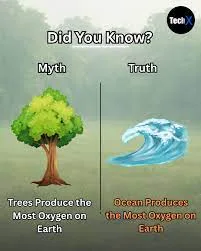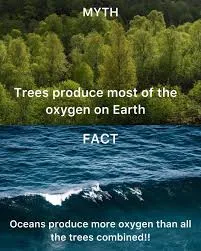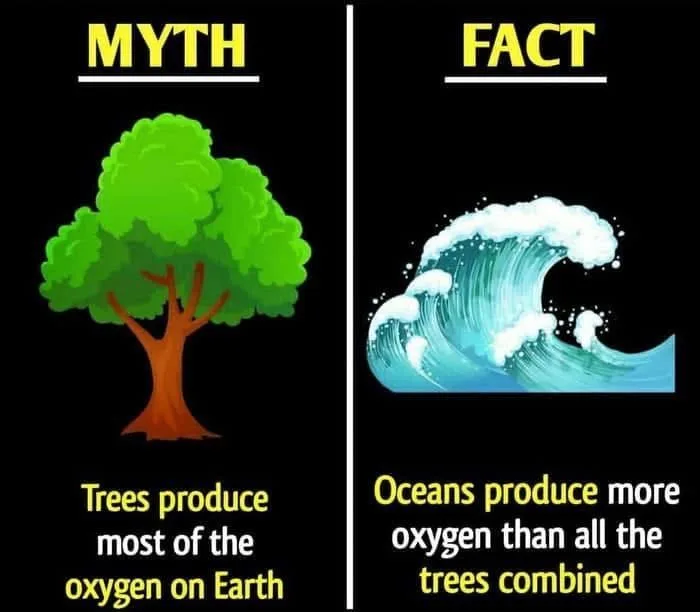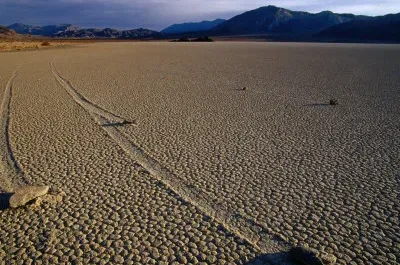Contrary to popular belief, trees and rainforests aren’t the main source of Earth’s breathable oxygen. Instead, microscopic marine organisms called phytoplankton produce the majority, contributing roughly 50–80% of the planet’s oxygen through photosynthesis. Forests, including rainforests, account for about 28%, with the rest from other terrestrial plants and minor sources. This revelation highlights the critical role of oceans in sustaining life and challenges the tree-centric view of oxygen production.

Phytoplankton: The Unsung Heroes
Phytoplankton, single-celled organisms like diatoms, dinoflagellates, and cyanobacteria, thrive in the sunlit upper layers of oceans, lakes, and rivers. Using chlorophyll, they convert sunlight, carbon dioxide, and water into energy, releasing oxygen as a byproduct. Covering less than 1% of Earth’s surface, these microbes are astoundingly efficient, producing oxygen at a scale that dwarfs terrestrial forests. Estimates suggest phytoplankton generate 150–300 billion tons of oxygen annually, compared to forests’ 80–100 billion tons.

Their dominance stems from the ocean’s vastness—covering 71% of Earth’s surface—and phytoplankton’s rapid reproduction, with some species doubling daily. Ancient cyanobacteria, ancestors of modern phytoplankton, were key to oxygenating Earth’s atmosphere 2.4 billion years ago during the Great Oxygenation Event, enabling complex life.

Forests’ Role: Significant but Secondary
Rainforests, like the Amazon, and other forests contribute about 28% of global oxygen, with temperate forests and grasslands adding smaller shares. Trees photosynthesize similarly to phytoplankton, but their slower growth and land-based limitations reduce their output. The Amazon, often called “the lungs of the Earth,” produces about 20% of forest-derived oxygen, but its net contribution is lower due to oxygen consumed by decomposition and soil microbes. Deforestation, while devastating for biodiversity and carbon storage, doesn’t critically threaten oxygen levels, as oceans dominate production.

Why the Misconception?
The idea that trees are the primary oxygen source persists due to their visibility and cultural significance. Rainforests’ lush greenery and conservation campaigns amplify their perceived role, overshadowing the microscopic phytoplankton. Educational oversimplifications also contribute, emphasizing forests while understating oceans’ vast output.

Lessons for Today
Like the Dahomey Amazons’ ingenious cornrow maps or the engineering of Pont Alexandre III, phytoplankton’s role reflects nature’s hidden ingenuity. Key lessons include:
Protecting Oceans: Overfishing, pollution, and climate change (warming oceans and acidification) threaten phytoplankton, risking oxygen production. Supporting marine conservation, like protecting coral reefs, is vital.

Challenging Assumptions: The tree myth urges us to question oversimplified narratives, fostering critical thinking in science and education.
Sustainability: Phytoplankton’s efficiency inspires sustainable technologies, like algae-based biofuels, mirroring the resourcefulness seen in historical examples.

A Vital Ocean Legacy
Phytoplankton, not trees, are Earth’s true oxygen factories, producing 50–80% of the air we breathe from the ocean’s depths. Their invisible work sustains life, reminding us to value and protect our seas. Just as ancient rock art captured the thylacine’s spirit or Newgrange aligned with the stars, phytoplankton’s quiet power connects us to Earth’s ancient rhythms, urging us to safeguard the blue heart of our planet.





